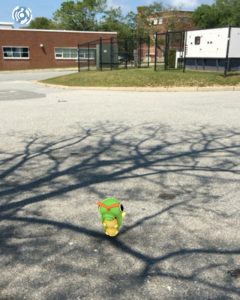By Kerry Gorgone, {grow} Contributing Columnist
Something is happening. Children are stepping outside, blinking into the sun as their eyes adjust. People are driving slowly around their neighborhoods, coming to a stop for no apparent reason. Of course there IS a reason…they’re hunting for Pokémon. Seriously!
As you’ve no doubt heard, the 90s phenomenon Pokémon is back in a big way, thanks to the Pokémon GO app.
If you’re still wondering what the game’s all about, how you play, and what all the terminology is, there are plenty of good primers out there to get you started (like this one).
But here’s the upshot for businesses: everyone’s playing Pokémon GO. People of all ages, all backgrounds. It’s more popular than Tinder and has more daily users than Facebook and Twitter.
In short, your customers are playing, and for brick and mortar businesses, this is a gold-plated opportunity for you to drive foot traffic to your business and, ideally, get people to come in and stay awhile.
The craze is impacting all kinds of organizations: “mom and pop” stores, monuments, public parks—places where getting a parking space used to be no sweat—are now buzzing with Pokémon trainers in search of rare specimens.
For instance, one kitschy Florida attraction, the Presidents Hall of Fame, has not just one PokéStop, but three (usually with lures running to attract the pocket-sized electronic beasts), and their dirt parking lot constantly crammed to capacity as people swipe, swipe, swipe and tap, tap, tap their smartphones.
Sadly, they seem unable to capitalize on their newfound popularity. The business is often closed while people congregate outside, even during regular business hours.
Quick aside, if you’re an organization or location that doesn’t appreciate Pokémon GO traffic (like Arlington Cemetery or Auschwitz), you can visit the support page to request that your location be removed as a PokéStop.
More likely, though, you’ll find that being a PokéStop yields a fantastic return on investment! Here are some tips for riding the Pokémon GO train to money town:
1. Keep lures active
“Lure modules” attract Pokémon to a specific PokeStop for 30 minutes.
If your business is lucky enough to be a PokéStop (which costs you nothing), you can buy eight of these “lure modules” to attract Pokémon. Cost: 680 PokéCoins.
Of course, you’ll have to spend a little actual money on PokéCoins: $100 buys 14,500 of the coins via in-app purchase.
With that much Pokécash, you can get yourself 168 lure modules, enough to keep your PokéStop crawling with Pokémon for 84 hours.
Given the massive increase in foot traffic people are reporting at PokéStops with active lures, this small investment (about $1/hour) should pay major dividends very quickly.
One pizzeria / PokéStop reported a 30 percent increase in food and beverage sales while the lures were active. So, at a cost of around one dollar per hour, you could increase sales thirty percent just by keeping the lures active. Not bad!
2. Host an event or offer discounts
Museums and churches have encouraged Pokemon trainers to visit, but some businesses have gone above and beyond. Sea World in San Diego, for example, hosted a “Lure-a-thon,” encouraging people to hunt Pokémon in the park. (They kept lure modules active during the event to attract more specimens for visitors.)
Other attractions have offered discounts to people showing the app or offered different pricing depending on which Pokémon GO team visitors are aligned with.
3. Use email to reach any Pokémon trainers who happen to be your list
Email your let any Pokémon trainers know that your location is a PokéStop, and encourage them to visit so they can “catch ‘em all.”
4. Do your part to keep Pokémon GO users safe
Legally speaking, commercial businesses owe the highest duty of care to “invitees,” e.g. customers and prospective customers who visit their establishment. It’s not enough for property owners to fix known dangers: they must also “reasonably inspect for, discover, and correct unknown hazards” on any part of the premises that the Pokémon-playing public has access to. (Source: FindLaw.com)
Be aware that people playing Pokémon GO are often distracted to the point of extreme carelessness. Some have crossed over international borders without realizing it, others have walked into traffic or off of cliffs.
In light of the increased foot traffic you’re likely to see, you’ll need to anticipate dangers that a distracted Pokémon GO player might miss: if you’ve got a trick step or a threshold that lots of people trip over, you need to fix these things in order to minimize the risk of liability.
You’ll also want to keep your insurance coverage current, but you should do that anyway.
For now, the benefits of embracing Pokémon GO should outweigh some owners’ reluctance to spend money on an online game, but things go from hot to stone cold fast these days, so keep an eye on sales so you’ll notice when Pokémon GO starts to cool off.
The mania will fade, so don’t construct a massive Pokémon battle arena on your parking lot, but do consider being part of the trend, if only to share in the experience and build a stronger relationship with customers and prospects.
Kerry O’Shea Gorgone is a writer, lawyer, speaker and educator. She’s also Senior Program Manager, Enterprise Learning, at MarketingProfs. Kerry hosts the weekly Marketing Smarts podcast. Find Kerry on Twitter.
Top illustration courtesy Flickr CC and Poteitou






